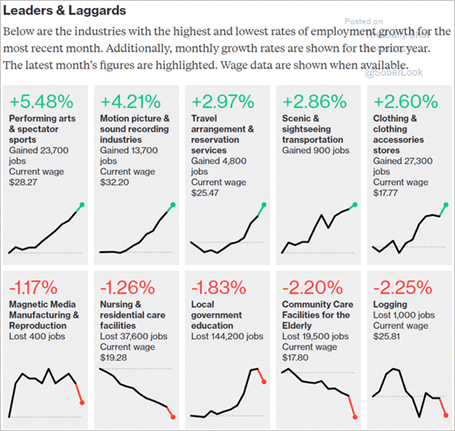
The long term care staffing crisis derives from decades of problems. Just as supply chain disruptions will leave Santa Claus’ Amazon-labeled sack much lighter this year, how can we keep the Grinch away from our long term care staff? The supply chain of frontline caregivers in long-term care is at a very precarious point in time.
The underfunded long-term care sector has sputtered along paying barely above minimum wage for a long term care staffing workforce which is (or rather, has been) predominantly women, women of color and very often first or second-generation immigrants. This is hardly controversial; these are the facts.
Let’s deconstruct the situation into:
- Why employees take these jobs;
- Why they stay in these jobs,
- Why they leave, and;
- What can providers do to respond.
Why LTC employees take these jobs
Jobs in long-term care staffing have been accepted primarily because of accessibility (low-income individuals can economically get to congregate care facilities or homecare assignments by public transportation), flexibility (often better-paying, off-hour shifts can be coordinated with daycare and other jobs) and ESL tolerance.
The pandemic has plummeted occupancy in congregate long-term care and contracting the need for low-wage long term care staffing workforce. This situation has exposed the rotten economic underpinnings of the sector, in addition to creating stress and burnout among those who remained. The overall economic recovery in most marketplace areas is resulting in rapid wage growth among service-related and light industrial sectors. We have all seen the ubiquitous “Help-Wanted” signs.

The same asset-limited, income-constrained individual who had been a reliable aid for a home health agency or food service worker for long term care staffing in the nursing home, now has an opportunity to make $5.00, $6.00 or even $7.00 dollars more per hour.
Why employees stay
The research is clear; frontline caregivers in long-term care stay in their jobs because of relationships. While scheduling flexibility, transportation/access and pay are critical variables in accepting employment, what keeps people in front line jobs are the relationships they form with patients, their supervisors and those with whom they work. These relationships and interpersonal bonds can be stretched to the breaking point, however, when staff are overworked, stressed and when supervisors and leadership fail to demonstrate empathy or a willingness to share the burden.
Why employees leave
There is turnover, and then there is turnover. Turnover in the extreme, often referred to as churn, has been a fact of frontline staff in long-term care for decades. Historically, providers have compensated for this frontline churn of 40, 50 even 60%, from a pool of willing local workforce. When that low income, asset limited pool of employees is siphoned away by competing offers of employment, providers have fewer choices. Frontline employees in long-term care leave their jobs for many different reasons; younger workers graduate from school and move to the next stage of their career trajectory, life circumstances such as marriage, relocation and other events. Others, however, leave because of the culture. Among too many long term care providers, too little attention has been devoted to the working environment for frontline staff. This legacy neglect is coming home to haunt the sector; the Grinch saw his opportunity and has struck!
Provider payment constraints
McDonald’s, Home Depot and Jiffy Lube have the option to pass these incremental labor cost increases on to their customers (“inflation”). However, state and federal intermediaries (payment sources) on which the sector relies for 70%+ of its revenue mitigate against passing along these cost increases. Even where home health agencies, nursing homes or residential care homes can apply for rate increases, the delays in securing the needed increase in payments send operations perilously deeper into the red. The existentially important metric, days cash on hand was briefly buoyed by stimulus funds, but most of these have already been disbursed, once again leaving many operations perilously close to insolvency. And even though demand is returning, some nursing homes report that they’re not able to admit because of staff constraints. Catch 22.
What can providers do?
The threat at this point is so existential, that any successful response must be collaborative, exigent and at scale. The sector does not have a history of responding this way. What’s more likely is that operators in specific marketplace areas will have to adopt a “last one standing” strategy. It’s not pretty, but here’s what it looks like:
- Hold on to what you’ve got. As it becomes more difficult to recruit, it’s absolutely critical to retain the staff you have. The churn in front line workers in long-term care, as we all know, would make turnstiles spin right off their hinges. The best research shows that people stay in jobs where they feel personal connections to other workers, their supervisors or the mission/purpose of their employers. This isn’t about, “being nice”; it’s about creating a culture – today – where “caring” is not only what you expect your staff to do, but what they do with each other, among themselves.
- Know why they leave. We do a terrible job using exit interviews in long term care, and healthcare overall. For as many departing staff as possible, make bona fide effort to find out why they’re leaving. We are entering the “great resignation” workforce economy in general, in which workers now feel emboldened to try new things, jump career paths, and retire early. No operations manager in a congregate care center can fight this against these forces, but it is imperative to discriminate – at a granular level – between unpreventable and preventable turnover. W Edwards Deming, (the father of CQI, TQM and everything else related to modern enterprise improvement) defines Quality as “…the degree to which a service is free of controllable defects”; preventable turnover is a controllable defect.
- Recruit relationships. Referring to suggestion number one (above), operators can enhance recruitment success by leveraging relationships between and among current employees and others in the community. Leveraging existing staff by incentivizing/encouraging them to inquire among their families, friends and acquaintances is the best way to recruit in this macro-economic environment. We certainly cannot compete on wages, so we have to compete on other factors; work with people you like, and like the people you work with (bad grammar, but you get the point). Systematize onboarding with relationship strengthening; build this into the very first workday and create expectations around relationships, not just tasks. Also, at the simplest level, incentivize employee referrals. These programs need to be carefully developed to prevent backlash among existing employees who may not get the incentive packages that newer employees are receiving, conflicts with unions and other dimensions.
- Resist the urge to bonus. Recruitment & hiring bonuses are being widely used in many service and light industry businesses to attract highly mobile professionals, especially in high-tech and knowledge-based sectors. Such recruitment bonuses are also being brandished by hospitals and others in healthcare. This is categorically bad for everyone in the long term care! The research about this is clear – the same people who “hop” for recruitment bonuses will hop again leaving you short-staffed and short-changed. Recruitment bonuses are a race to the bottom. Discuss this with other, sympathetic operators in your marketplace area, and create an understanding and shared set of principled recruitment guidelines. This requires patience; watching nurses leave for five figure recruitment bonuses is difficult. Research and experience show, however that these incentivized tenures simply don’t last.
The way to keep the Grinch away this season is to: 1. Close the back door so he can’t get in; 2. Pay careful attention when anyone does leave; 3. Love and cherish whom you have, inviting them to invite others, and; 4. Avoid trying to buy-off the Grinch.
Irving Stackpole is President of Stackpole & Associates, a marketing, market research and training firm at www.StackpoleAssociates.com. He can be reached directly at: istackpole@stackpoleassociates.com.


